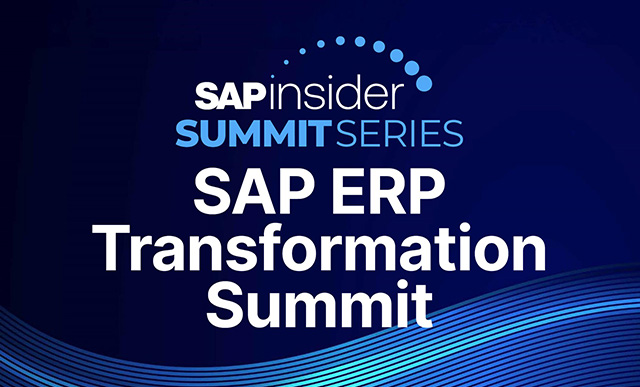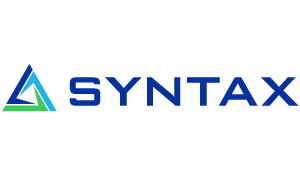Filter By
Browse By
- SAP Analytics and AI
- SAP Application Development and Integration
- All SAP Application Development and Integration
- SAP ABAP
- SAP ABAP Development Tools
- SAP ABAP Test Cockpit
- SAP API Management
- SAP BAPI
- SAP Basis
- SAP BRF
- SAP Business Application Studio
- SAP CMS
- SAP Design Studio
- SAP Development Tools
- SAP DevOps
- SAP EAI
- SAP EDI
- SAP Extension Suite
- SAP Fiori
- SAP Fiori Elements
- SAP Integration Suite
- SAP Low Code Application Development
- SAP Low Code Automation
- SAP Netweaver
- SAP Release Management
- SAP UI5
- SAP Web Application Server
- SAP Web IDE
- SAP Business Process Management
- SAP Center of Excellence
- SAP CIO
- SAP Customer Experience
- SAP Data and Data Management
- All SAP Data and Data Management
- SAP BW
- SAP BW/4HANA
- SAP Crystal Reports
- SAP Data Archiving
- SAP Data Center
- SAP Data Governance
- SAP Data Integration
- SAP Data Migration
- SAP Data Quality
- SAP Data Services
- SAP Data Strategy
- SAP Data Visualization
- SAP Data Warehouse Cloud
- SAP DMS
- SAP Document Control
- SAP EIM
- SAP ETL
- SAP ETL Tools
- SAP HANA
- SAP HANA Administration
- SAP HANA Deployment Infrastructure
- SAP HANA Studio
- SAP Master Data
- SAP Master Data Governance
- SAP MDM
- SAP Enterprise Architect
- SAP Enterprise Asset Management
- SAP ERP
- SAP Finance
- All SAP Finance
- SAP Accounting
- SAP AR AP
- SAP Asset Accounting
- SAP Billing Systems
- SAP BPC
- SAP BRIM
- SAP Cash Management
- SAP Central Finance
- SAP Controlling
- SAP COPA
- SAP Cost Center Accounting
- SAP Currency Risk
- SAP e-invoicing
- SAP FICO
- SAP Finance Automation
- SAP Advanced Financial Closing
- SAP Financial Consolidation
- SAP Financial Planning
- SAP FX Risk
- SAP General Ledger
- SAP Global Tax Management
- SAP Hyperion
- SAP Order to Cash
- SAP Payment Processing
- SAP Profitability Analysis
- SAP Rebate Management
- SAP S/4HANA Finance
- SAP SWIFT Compliance
- SAP Treasury Management
- SAP Universal Journal
- SAP Governance Risk and Compliance
- SAP Human Capital Management
- SAP Intelligent Technologies
- SAP Platform and Technology
- All SAP Platform and Technology
- SAP Business Technology Platform
- SAP Cloud
- SAP Cloud Connector
- SAP Cloud Integration Platform
- SAP Cloud Migration
- SAP Cloud Platform
- SAP Cloud Providers
- SAP Cloud Strategy
- SAP Digital Signature
- SAP Container Platform
- SAP HANA Enterprise Cloud
- SAP Digital Asset Management
- SAP Smart Forms
- SAP HEC
- SAP Digital Integration Hub
- SAP Hyperscalers
- SAP Infrastructure
- SAP Messaging
- SAP Quality and Testing
- SAP Security
- SAP Spend Management
- SAP Supply Chain Management
- All SAP Supply Chain Management
- SAP APO
- SAP Asset Management
- SAP Business Network
- SAP Digital Manufacturing Cloud
- SAP Digital Twin
- SAP EWM
- SAP IBP
- SAP Inventory Management
- SAP Label Printing
- SAP Logistics
- SAP Manufacturing
- SAP Manufacturing Automation
- SAP MES
- SAP MII
- SAP MM
- SAP MRO
- SAP MRP
- SAP Order Management
- SAP Plant Maintenance
- SAP PLM
- SAP Production Planning
- SAP S&OP
- SAP SD
- SAP SPM
- SAP Supply Chain Planning
- SAP Track and Trace
- SAP Transportation Management
- SAP System Administration
What is SAP ERP?
An Enterprise Resource Planning (ERP) system makes it possible for organizations to run within a single system their core processes for finance, manufacturing, human resources (HR), supply chain, services, procurement, and other key business functions.
What is SAP ERP?
An Enterprise Resource Planning (ERP) system makes it possible for organizations to run within a single system their core processes for finance, manufacturing, human resources (HR), supply chain, services, procurement, and other key business functions.
SAP ERP solutions are based on over 40 years of experience across all industries and business sizes. They leverage technology that is constantly updated to build ERP tools that can be constantly updated.
The first official SAP ERP solution was the introduction of mySAP ERP in 2004, although this was based on much of the functionality and experience SAP had gained with the SAP R/2 and SAP R/3 business application software suites. While the mySAP ERP solution was targeted at a smaller audience, SAP ERP Central Component (SAP ECC) was introduced in the same and provided all the core business processing capabilities along with data warehouse and enterprise management capabilities in a single system.
The most recent SAP ERP system, SAP S/4HANA, was introduced in 2015 and was a significant shift for SAP as it runs exclusively on the SAP HANA database. A software-as-a-service version of the solution, SAP S/4HANA Cloud, was introduced a year later in 2016. There is a new major release of the on-premise version of SAP S/4HANA each year, while the cloud editions are released quarterly. SAP has announced that they will end the mainstream maintenance and support of all ERP systems other than SAP S/4HANA at the end of 2027.
SAP started to shift their strategy in 2020 to focus more on the cloud-based software-as-a-service ERP system SAP S/4HANA Cloud. This has been done in conjunction with a shift in messaging toward cloud ERP. While most SAP ERP customers are still running older solutions such as SAP ECC, this focus on cloud ERP has been done in conjunction with RISE with SAP.
The biggest factors impacting organizations’ move to newer SAP ERP systems include the opportunity to re-engineer processes or correct configurations from an older system, the upcoming end of maintenance of existing ERP releases, and a desire to transform existing solutions and create a centralized model and structure.
SAP has many implementation partners that will assist organizations with either their initial SAP ERP deployment or a move to SAP S/4HANA from an earlier ERP release. These range from global solution service partners like Capgemini, Cognizant, Deloitte, and T-Systems to smaller partners like smartShift and SoftwareONE that offer solutions and software to help with migration, as well as partners specializing in the migration process itself like Lemongrass.
What Does SAP ERP Do?
An Enterprise Resource Planning (ERP) system makes it possible for organizations to run within a single system their core processes for finance, manufacturing, human resources (HR), supply chain, services, procurement, and other key business functions. SAP ERP solutions are based on over 40 years of experience across all industries and business sizes. They leverage technology that is constantly updated to build ERP tools that can be constantly updated.
By centralizing key functions like sales, security, analytics, and much more into one SAP system, an ERP can help provide a more interconnected experience for users and business leaders. Relying on an ERP can help standardize security measures, help boost sales performance, making the overall experience better for both users and customers.
Benefits of SAP ERP
SAP ERP systems offer significant benefits to their customers. These solutions are available to organizations of all types and sizes. One of the chief benefits is flexibility. SAP ERPs are easily customizable, both in terms of the applications themselves and how they connect and interact within a network overall. ERPs are available in public and private clouds, so users can have online access to the network from anywhere. They can also be used in on-premise only scenarios, offering users the option to keep their IT and security in-house. ERP systems from SAP centralize critical business functions like planning, analytics, and finance all in one place. This saves employees from significant manual work, allowing them to instead spend their time on more value-added tasks.
Types of SAP ERP Systems
Organizations range in size, operate in different industries, and may have unique business needs, so SAP offers several different ERP solutions to meet these challenges.
SAP’s flagship ERP solution is SAP S/4HANA. Released in 2015, this ERP solution runs exclusively on the SAP HANA database. It features modules like Asset Management, Finance, Human Resources, Manufacturing, R&D/Engineering, Sales, Service, Sourcing and Procurement, and Supply Chain. These modules all have different features and functions to meet the needs of their industry.
The full-scale ERP suite is used by companies of all different sizes and provides organizations with the flexibility to respond to shifting business environments. Recent versions of SAP S/4HANA now feature enhanced technological features like machine learning, automation, AI, and other capabilities.
The primary reason that organizations opt for SAP S/4HANA is its simplicity. The system standardizes and simplifies IT and business processes throughout organizations by acting as the core of the business. It can centralize data access from sources within other SAP systems and outside of SAP. This provides business leaders with end-to-end visibility, enhancing their decision-making capabilities.
SAP S/4HANA relies on SAP Fiori as its user interface, which makes interacting with the ERP system a more personalized and user-friendly experience.
SAP S/4HANA is not SAP’s only ERP offering. For smaller and midsize businesses, SAP offers Business One. Billed as a “a long-time favorite of smaller firms and subsidiaries of large enterprises” by SAP, SAP Business One also features cloud capabilities on a more affordable scale for businesses with fewer processes to oversee.
SAP also offers midsized firms a more specialized cloud-based ERP suite known as SAP Business ByDesign. Designed to meet the needs of organizations that are scaling rapidly, SAP Business ByDesign also connects core functions across the breadth of an enterprise.
Some organizations still run on SAP ECC 6.0, a legacy system that predates SAP S/4HANA as SAP’s flagship ERP. That ERP system is being phased out as SAP pushes organizations to complete the transition to SAP S/4HANA. Support and maintenance for the legacy SAP ECC ERP will come to an end in 2027, though SAP does offer users the option of using the SAP ECC 6.0 Enhancement Pack 8 through 2030. Yet to make the most out of an SAP ERP system and gain the benefits of flexibility and the full power of SAP HANA, it is recommended that companies make the switch to SAP S/4HANA.
Organizations should perform a self-evaluation and research the different possibilities to determine which SAP ERP benefits would bolster their enterprise processes the most.
Join SAPinsider to access opportunities for networking and engagement in the dynamic SAP ecosystem. As a member, you will have access to a wealth of valuable resources and content tailored to SAP technologies and best practices like the latest research reports, articles, webinars, and events that will keep you informed and ahead of the curve.SAPinsider membership grants you exclusive access to in-depth analyses, expert insights, and practical guidance that will empower you to navigate the ever-evolving SAP landscape with ease. SAPinsider membership will enable you to remain one step ahead and harness the latest trends, innovations, and strategies to drive your own powerful digital transformations, optimize your SAP investments, and unlock business success.
332 results
-

The DIY Dilemma: Why Building Your Own OMS Is a Losing Bet In The SAP World
Reading time: 3 mins
Organizations using SAP face pressure to modernize their order management systems, with the choice between custom builds, often leading to hidden costs and delays, versus pre-built solutions like DataXstream’s OMS+, which offer predictable costs, faster implementation, and minimized technical debt.
-

Understanding GROW with SAP vs RISE with SAP: Key Differences
Reading time: 6 mins
Are you trying to decide between GROW with SAP vs RISE with SAP for your business? This article breaks down the key differences, features, and benefits of each solution, helping you choose the best fit for your company’s unique needs.
-

Accelerating & De-Risking SAP S/4HANA Migration with UiPath Automation
Reading time: 3 mins
UiPath’s partnership with SAP as a Solution Extension partner revolutionizes the migration process to SAP S/4HANA by integrating automation, reducing complexity and risk, and enabling organizations to achieve a clean core while saving thousands of hours.
-
-

The New Growth Engine: An F&B Leader’s Guide to SAP Transformation
Reading time: 4 mins
To transform their SAP core into a high-performance growth engine, Food & Beverage and Consumer Packaged Goods companies must adopt a pragmatic approach focused on the human element of change management, with a strong data foundation to leverage AI capabilities for improved decision-making and operational efficiency.
-

Finding the Power of the Right Customer Portal
Reading time: 3 mins
In today’s competitive landscape, companies like Serrala enhance customer loyalty and operational efficiency by providing a user-friendly, automated customer portal that streamlines payments, reduces manual workloads, minimizes errors, and improves cash flow visibility.
-

License Clarity, Not Guesswork: ToggleNow’s Optimus Drives SAP Cost Savings and Compliance
Reading time: 2 mins
As SAP licensing complexity increases with digital models, CIOs and IT leaders face compliance challenges that ToggleNow’s Optimus platform addresses by providing tailored license governance solutions that enhance decision-making and reduce financial risks.
-

CData-SAP Partnership Expands Connectivity for SAP Business Data Cloud
Reading time: 3 mins
SAP has strengthened its partnership with CData Software to integrate advanced connector technology into the SAP Business Data Cloud, enhancing real-time access to external data sources and supporting agile AI and analytics capabilities while reducing reliance on data replication.
-
-

Taking AP Automation from Good to Great with xSuite
Reading time: 3 mins
Faced with financial uncertainty, SAP organizations should seek automation solutions like xSuite for Accounts Payable to enhance operational efficiency, reduce costs, and ensure reliable integration with SAP systems, all while positioning themselves for future technological advancements.
-

POWER YOUR PAYMENTS WITH EXPERTISE YOU CAN TRUST
Reading time: 1 min
Worldpay and Paymetric (a Worldpay company) offer a Single Worldwide Payment Solution designed specifically for B2B enterprises to streamline global payment processing.
-

Owning the Risk: Finance’s Strategic Role in Managing Uncertainty
Reading time: 3 mins
Modern businesses face regulatory challenges that present CFOs with strategic opportunities, emphasizing the need for finance teams to move away from outdated manual processes to embrace automation, enhance risk management, and leverage technology for efficiency and compliance.
Become a Member
Unlimited access to thousands of resources for SAP-specific expertise that can only be found here.
Become a Partner
Access exclusive SAP insights, expert marketing strategies, and high-value services including research reports, webinars, and buyers' guides, all designed to boost your campaign ROI by up to 50% within the SAP ecosystem.
Upcoming Events
-

SAPinsider ERP Transformation Summit
October 22 - 23, 2025
New Orleans, Louisiana
United States
View Event
Related Vendors
Your request has been successfully sent

